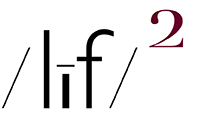One might compare the art of photography to the act of pointing. It must be true that some of us point to more interesting facts, events, circumstances, and configurations than others. [...] [when viewing tan “interesting” photograph] we would be uncertain how much our pleasure and sense of enlargement had come from the things pointed to and how much from a pattern created by the pointer. ~ John Szarkowski
ASIDE : NOW THAT-it is 1 day after my 75th birthday-I AM A DAY OLDER AND MUCH WISER I will return to writing about the idea of creativity. END OF ASIDE
In my last entry, The Eye Traffics in Feelings, it was written that, iMo, a creative photograph is one that excites the eye, not the intellect. Therefore, it seems logical that an explanation / definition of what I think constitutes a “creative photograph” would be in order…
In the photography realm, decorative arts division, a creative photograph most often refers to a picture that most often employs obvious effects, techniques, and “tricks” in order to make a picture “interesting” and appear to be the result of a creative approach to making a picture. In addition, those pictures are invariably representations of what I would label as officially approved photographic referents and they are composed by the rules.
In the other photography realm, the Fine Art division, photographs that display straight-forward approach to picture making, i.e. sans effects, flashy technique, or cheap tricks, are much more the order of the day. That is to write, creativity is evident in a picture maker’s choice of what to picture, aka: the act of pointing, and in doing so, imbuing the work with a formal rigor that identifies a work of art, aka: (amongst other qualities) an interesting configuration.
iMo, a creative picture maker is free to point his/her camera at any fact, event, circumstance, and configuration. However, to my eye and sensibilities (in both the making of my pictures and the viewing of those made by others), it is the manifestation of an interesting configuration, aka: form / the pattern created by the pointer, rather than the depicted referent that excites my eye cuz…
“It ain’t what you eat, it’s the way how you chew it.” ~ Sleepy LaBeef-that excites my eye.
To be certain, I am not alone in this preference for form inasmuch as most (all?) of the Fine Art world places a very high value on this quality in any Art genre.
To quote Sir Ansel:
“There are no rules for good photographs, there are only good photographs.”
Indeed. Just as there are no rules in Fine Art Photo Division for what can be pictured, there no rules for the making of an interesting configuration. The only right configuration for a photograph is the one that a picture maker chooses to create, the one that best serves the intent of the vision he/she wishes to express.
“Good composition is the strongest way of seeing:” ~ Edward Weston
In the case of my picture making, my eye and sensibilities are pricked by scenes in the real world that provide the potential for the making of pictures with visual energy. That is a visual configuration quality that keeps the eye moving-skittering and careening and bouncing off my imposed frame (like a pool ball on a pool table)-across the 2D visual field of a photographic print. Although, that written, I attempt to illustrate that quality in a manner that appears to be controlled, as opposed to haphazard and indiscriminate.
All of the above written, I believe that creativity finds its roots in a photographer’s understanding of how he/she sees the world. That is, that which is commonly referred to as their vision. If that manner of seeing is one that leads some of us [to] point to more interesting facts, events, circumstances, and configurations than others, then chances are better than good that true creativity and the making of pictures that excite the eye will follow quite naturally .
